Have you tried growing every common houseplant under the sun, only to find you kill them within a few weeks? Maybe you have a demanding work schedule, or you travel quite a bit and you just can’t seem to find the time to keep your houseplants alive. Whatever the reason, there are actually a number of houseplants that can withstand a bit of neglect that are quite difficult to kill.
So, where do you start? Which types of indoor plants should you be considering? Not only are there plenty of houseplants to choose from, but most of them look quite different from one another. This gives you plenty of diversity in your plant choices to supply your indoor garden with plenty of plants that are low-maintenance.
We’ve put together a huge list of houseplants that we love that can tolerate a lack of water, missed feedings, and a whole lot more. Let’s jump in and take a look at some of the hardiest houseplants that are extremely resilient, making them very difficult to kill!
Snake Plant

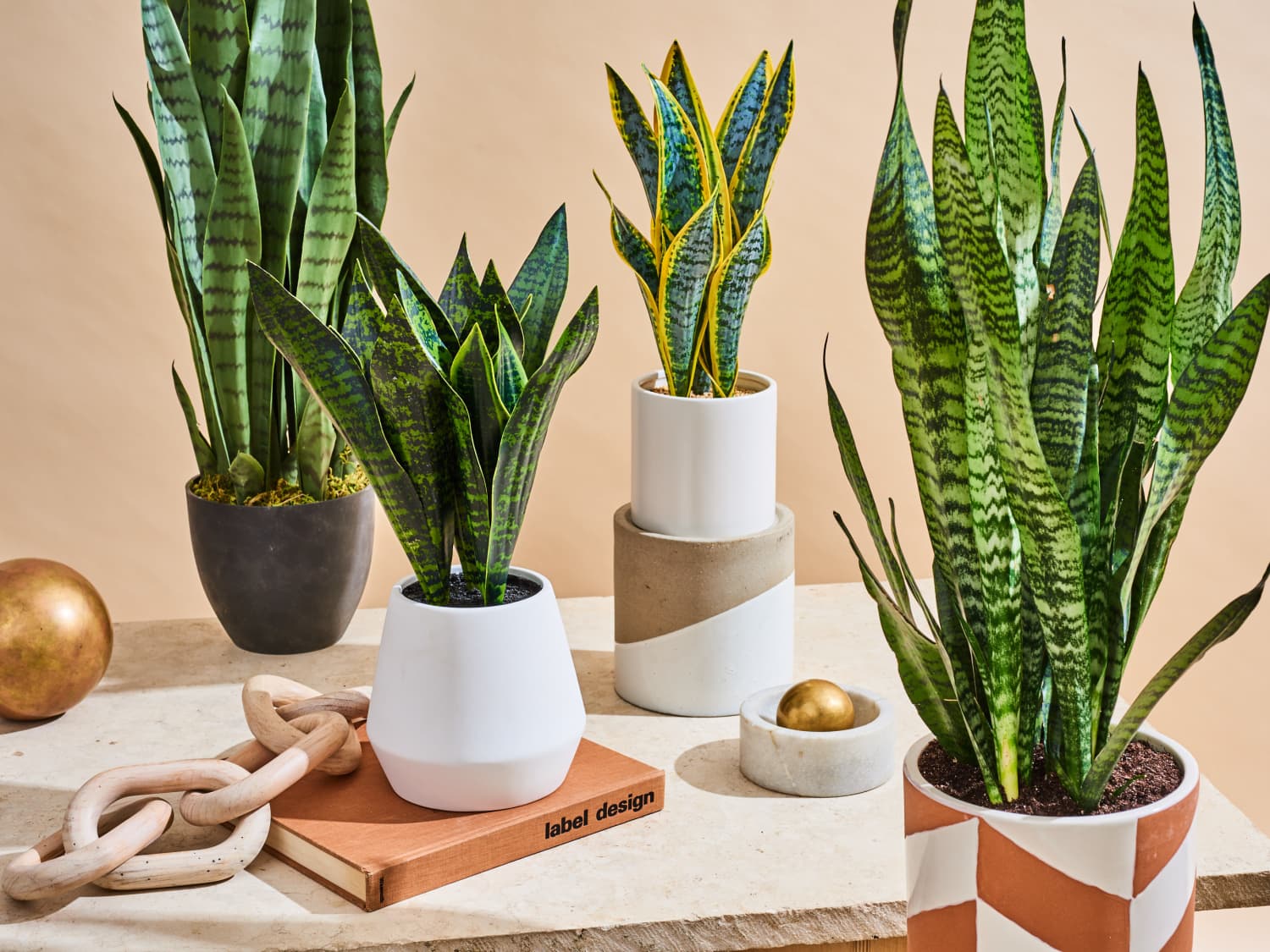 Water the Snake Plant only when the soil is dry out.
Water the Snake Plant only when the soil is dry out.
Top of the list of unkillable houseplants has to go to the ever-popular Snake Plant, also known as Mother-In-Law’s Tongue. This plant is one of the most resilient around, tolerating almost any light conditions from low light to direct sun. They can also go for weeks without watering and will only really struggle when they receive too much water.
They don’t require any specialized care and are also easy to propagate, allowing you to grow more of these hard-to-kill plants at no cost. Once you’ve found the ideal spot, you can pretty much set them down and forget about them for weeks on end with no trouble.
African Spear Plant

African Spear Plants are one of the rare indoor plants that can be placed wherever you want.
The African Spear Plant is also known as the Cylindrical Snake Plant, providing a clue as to the genus this structural beauty belongs to. Closely related to the common Snake Plant, this rarer species has long cylindrical leaves that are bound to catch anyone’s eye.
They also come with all the other benefits of Snake Plants, including being very difficult to kill. Again, the only real risk is overwatering.
These plants store tons of water in their long leaves, meaning their soil can be left to dry out almost completely before watering again. They experience few problems with pests and diseases and live for many years, even when neglected.
ZZ Plant

ZZ Plant does not like dampness, prefers warmth, bright light, and very moderate watering.
Another ‘plant it and forget it’ favorite is the ZZ Plant. Featuring glossy green leaves on upright ‘stems’, these interesting plants have a unique look that adds a modern touch to any interior design. They are also incredibly easy to take care of, preferring to be left alone than fussed over.
The only concern you may face with these plants is stretching. While they can survive lower light areas, the denser leaves may begin to grow further apart as the plant looks for a light source. Beyond that, you will find very few problems with these reliable plants that last for years on end.
Cast Iron Plant
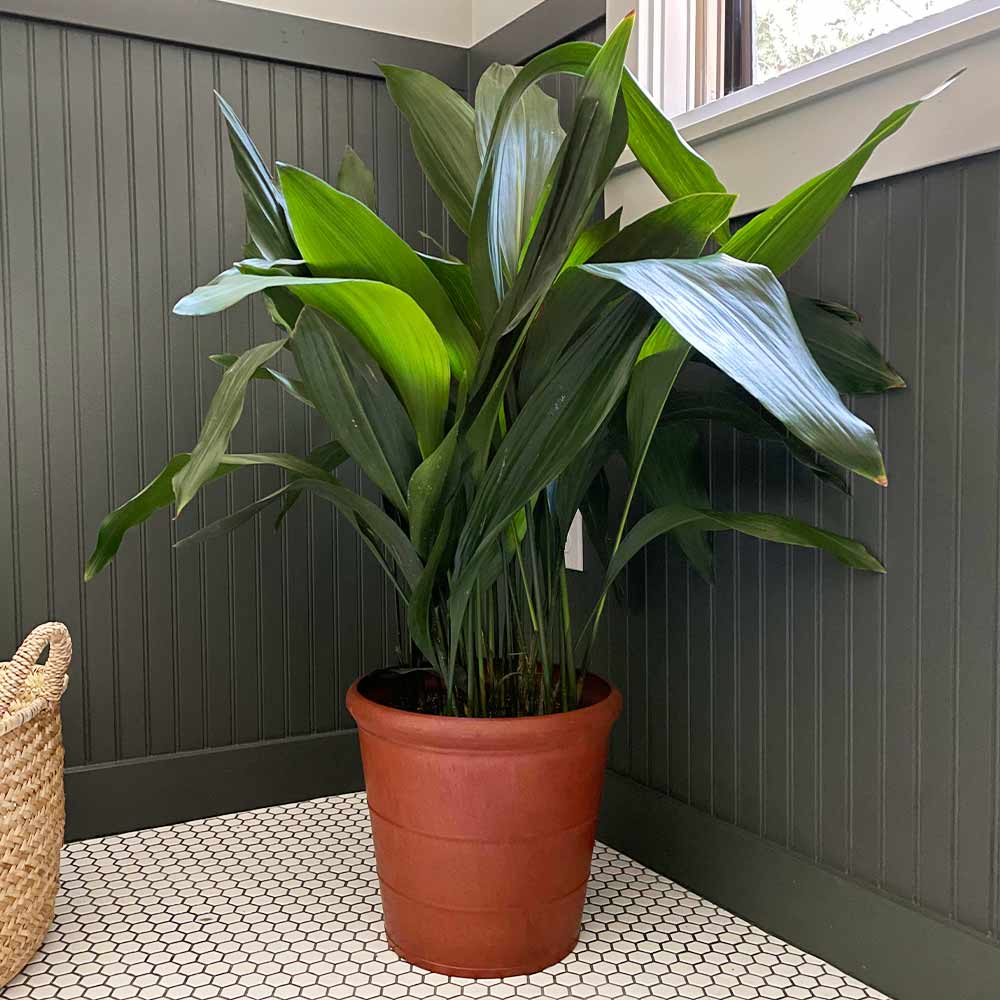
Cast Iron Plant can grow without sunlight under fluorescent lighting.
The common name of Aspidistra elatior gives away its impossible-to-kill nature. If you’re a beginner looking for a houseplant that won’t give you any trouble, this is the one to reach for.
It is not one of the most popular, passed on for other common leafy plants like the Monstera. However, there is no reason not to add this simple beauty to your houseplant collection.
The large glossy leaves cascade over pots in a similar way to Peace Lilies, only growing larger and more prolific when given space. Simply water every week or two and the Cast Iron Plant will continue to look as good as it did the day you bought it.
Pothos
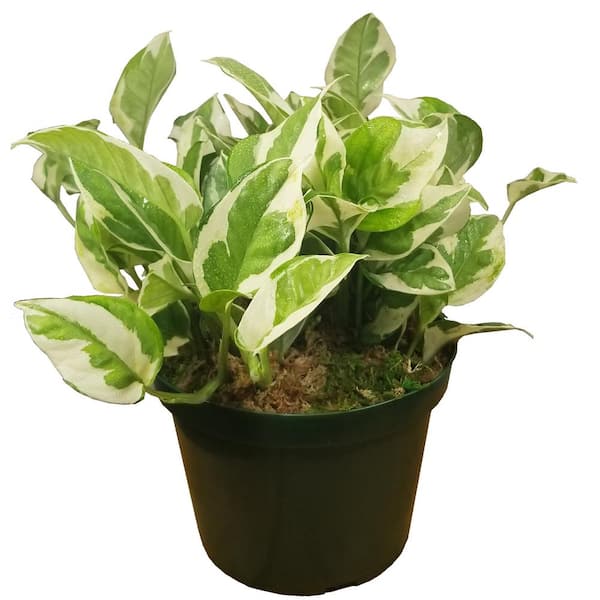
Pothos loves abundant watering without stagnation of water in pans and with the drying of the top layer of the substrate between procedures.
The popular Pothos is one of the most widely purchased and beloved houseplants around the world. The cascading vines grow quickly and feature an interesting range of patterns and colors across the many cultivars. With so many varieties, they have become a hot collector’s item, popular among newbies and experienced plant parents alike.
Once you’ve found the perfect spot for your Pothos, it will grow prolifically without much input from you. Thanks to their waxy leaves, they can survive slightly longer without water and non-variegated varieties grow just as well in moderate to low light conditions. If you’re looking for the perfect houseplant gift, this is it.
Heartleaf Philodendron
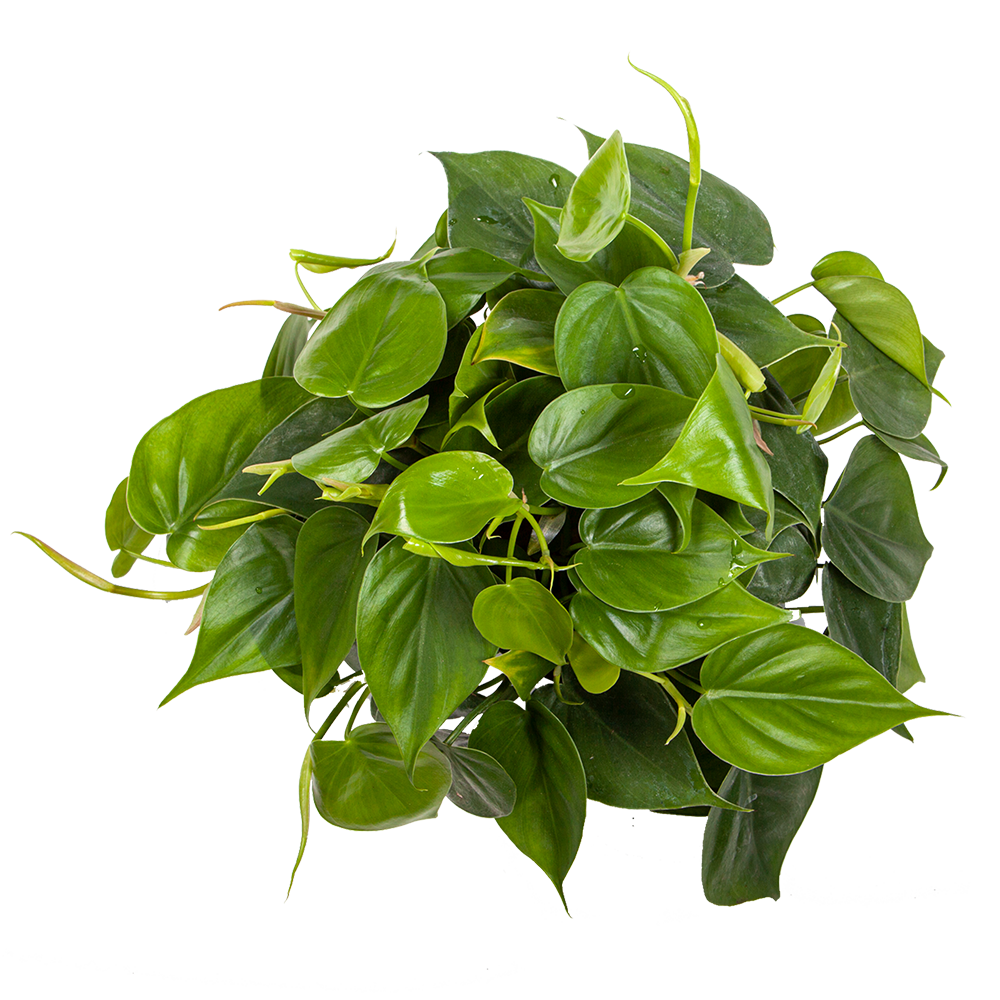
Heartleaf Philodendron needs frequent watering, high humidity and bright light.
Often confused for the Pothos, Philodendron hederaceum is another climbing or trailing vine that thrives on neglect. Its common name perfectly describes the shape of the glossy foliage that looks best when trained up a trellis or moss pole.
Like many plants in the Philodendron genus, this species is one of the easiest to care for. They continue to look their best when lacking watering or light and don’t encounter many problems with pests or diseases. They can also handle low humidity areas well and are easy to propagate – simply pop a piece of the vine in water.
Air Plants
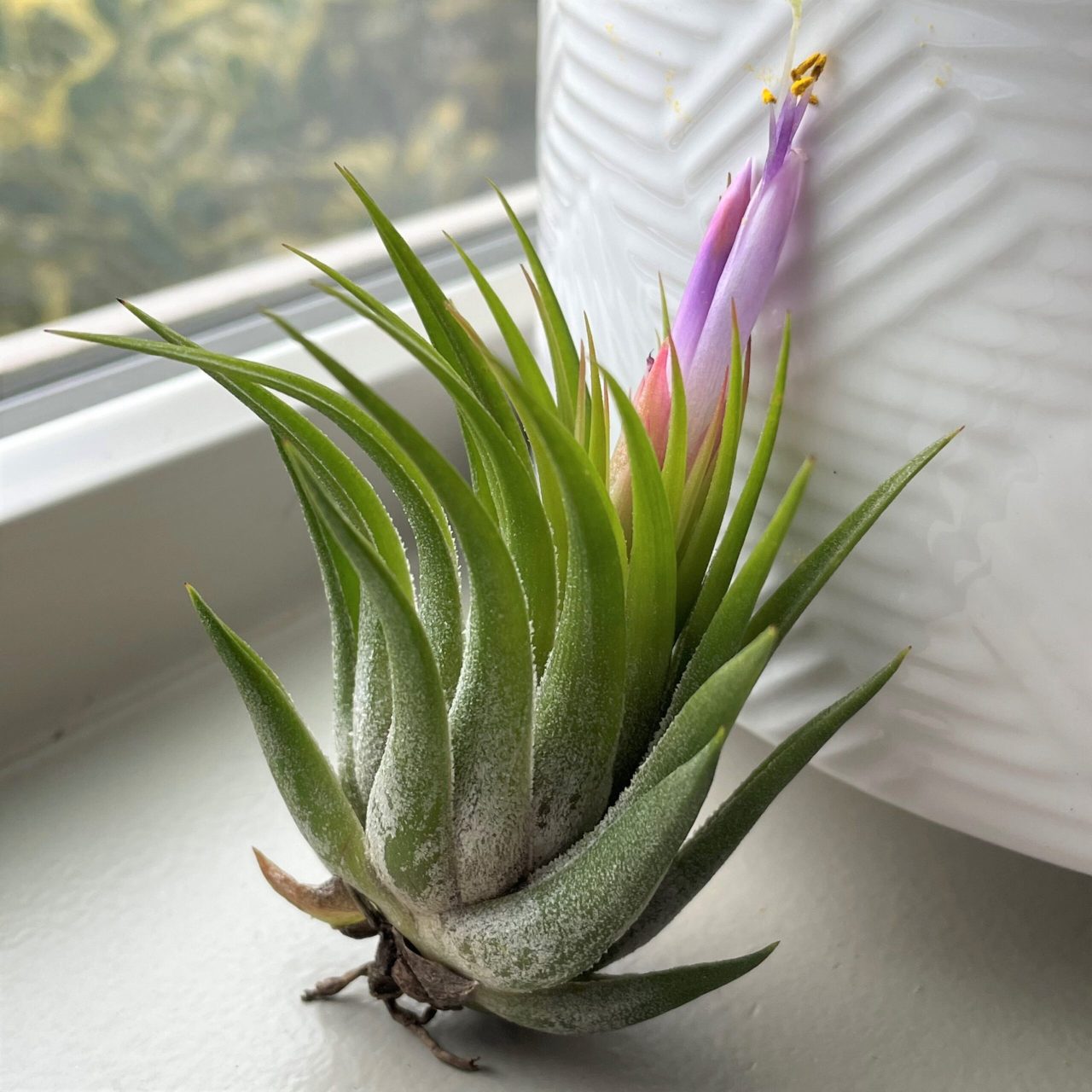
Air Plants are not recommended to be placed in aquariums and terrariums with closed lids and lack of ventilation.
The term “Air Plants” are not one genus or even one species of plant. Rather, it is a category of epiphytes that don’t grow in soil, but attach their roots to other trees or objects.
Instead of getting nutrients and water from the soil, they absorb these things from the air and from the pockets of debris in the trees they are attached to in their native habitats.
Air Plants are incredibly easy to care for, provided you understand their needs. They rely on high humidity to grow, but beyond that, don’t require much attention. The process of watering simply involves dunking them in a bucket of water, simulating the quick rains of their native habitats. They don’t need repotting or any special care and can live for years when their few needs are met.
Spider Plant
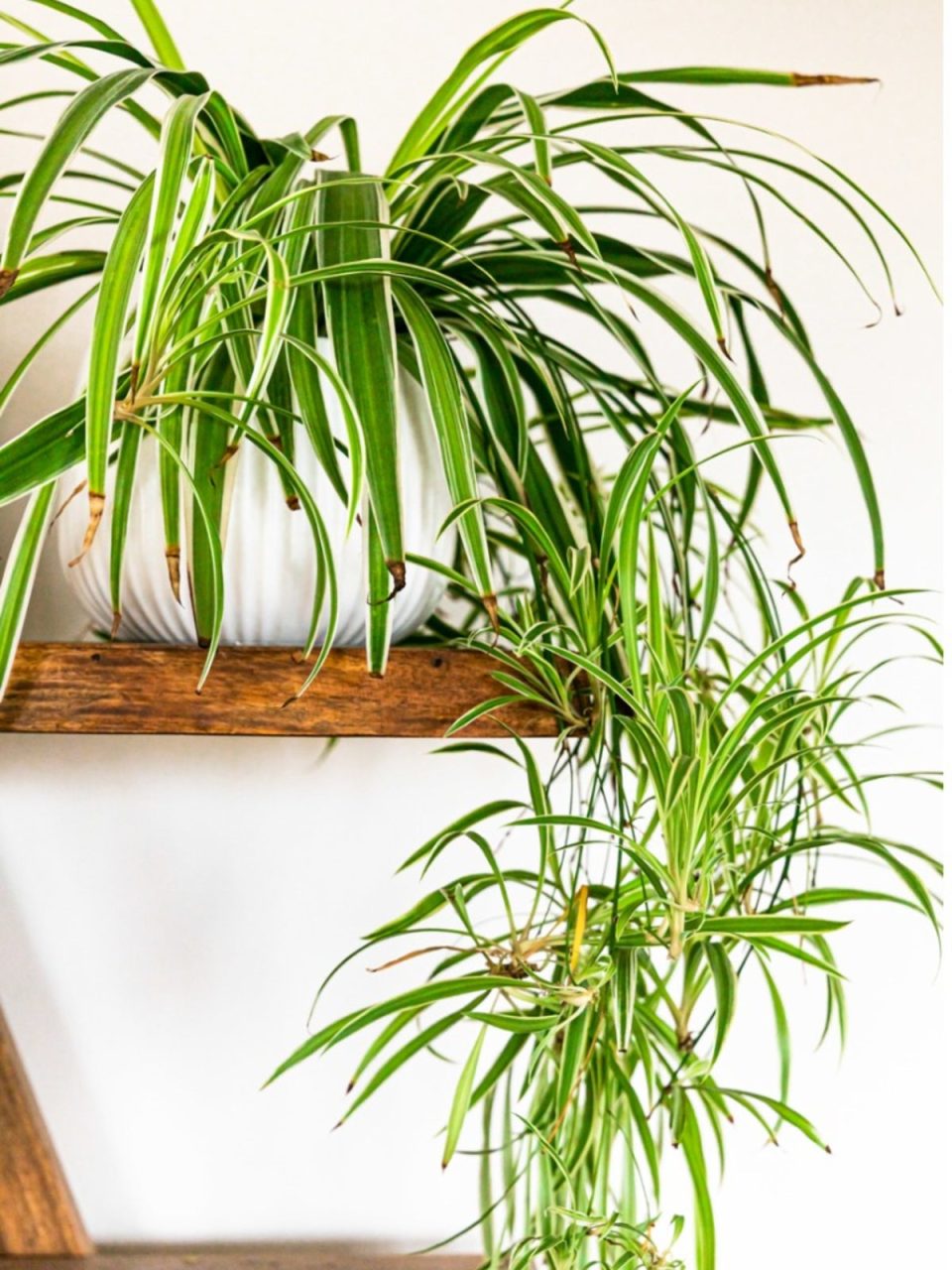
Spider Plants adapt well to just about any lighting condition.
Whether placed in a hanging basket or rested in a pot on a bookshelf, Spider Plants will always perform. The arching leaves cascade over pots and form a wonderfully full look reminiscent of outdoor grasses in the wind. And, when given enough light, they produce the ‘spiders’ – tiny plantlets that can be replanted to form into full Spider Plants.
Spider Plants have no special needs or requirements and still look their best, even when forgotten about for a few days. They can survive lower light, dry soil, and lack of nutrients well, ideal for forgetful plant parents that don’t want to fuss over their houseplants.
Chinese Evergreen

During the period of active growth, from spring to mid-autumn, Chinese Evergreens need abundant watering.
The genus Aglaonema is one packed with interest and variety. Commonly known as Chinese Evergreens, these leafy plants feature tons of colors in different patterns, meaning there is always something different and unique to choose from.
On top of these aesthetic benefits, these plants are also difficult to kill, surviving almost anything you can throw at them. Keep in mind that rarer or newer cultivars may be more sensitive than others, but most will give their owners no trouble at all.
Dumbcane
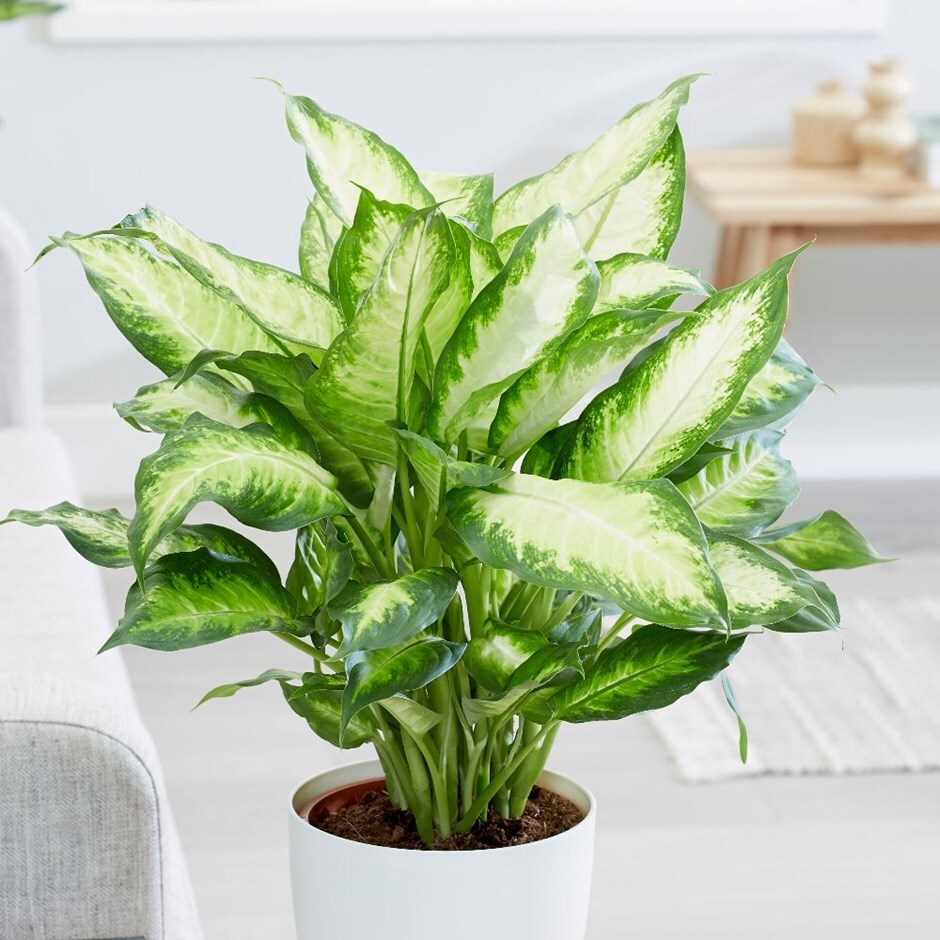

Dumbcane requires shade in summer, and good lighting in winter.
With similar cascading leaves with mottled patterns, Dumbcanes and Chinese Evergreens are often confused. There are some small differences in looks, such as the shapes of the leaves that can help you tell them apart. However, they certainly share their almost impossible-to-kill characteristics.
Dumbcanes have thick central stems that hold enough water to keep the leaves glossy and lush for days to weeks on end. In fact, the biggest mistake you can make with these plants is giving them too much water. They survive low light well and don’t need repotting or pruning often, limiting the need for maintenance.
Jade Plant
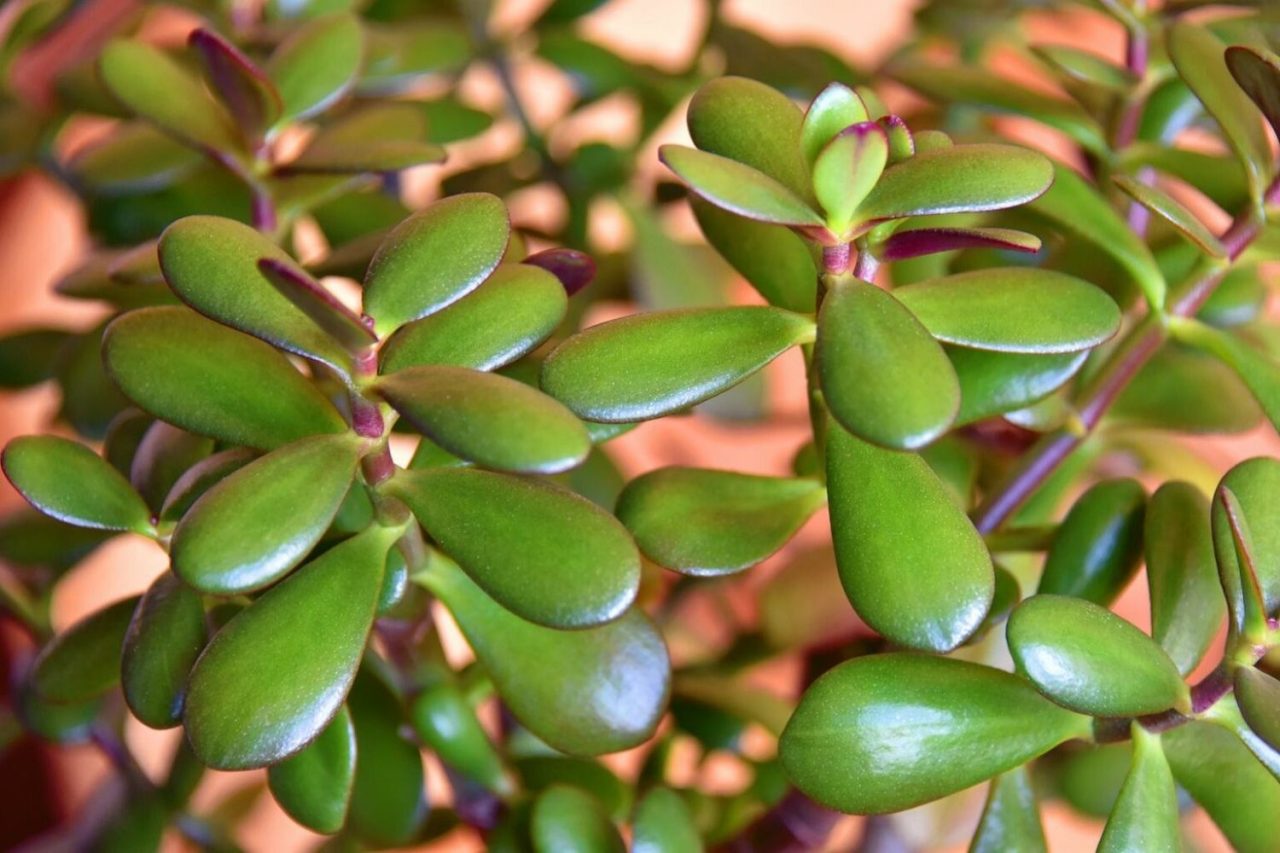
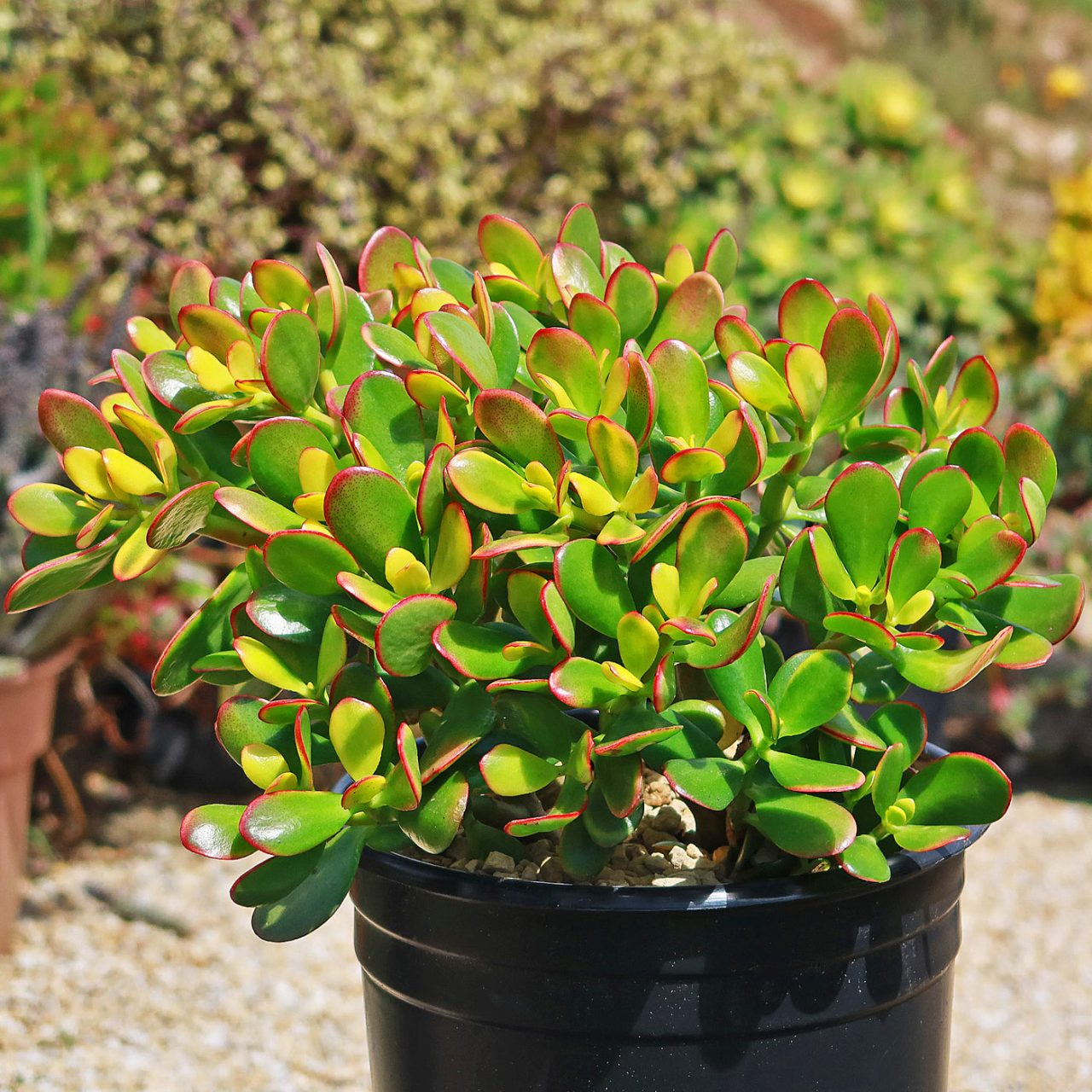
Jade Plants growing indoors need a sunny window or light.
Native to Southern Africa, these succulents are one of the best to grow indoors. With thick, upright stems, Jade plants look like tiny trees and have tons of growing potential when given the right space and environment.
The needs of these plants are slightly different from other houseplants. They need more direct light to replicate the conditions in their native habitats and don’t respond well to overwatering. However, with these conditions in mind, they will live for many years with little fuss.
Peace Lilly
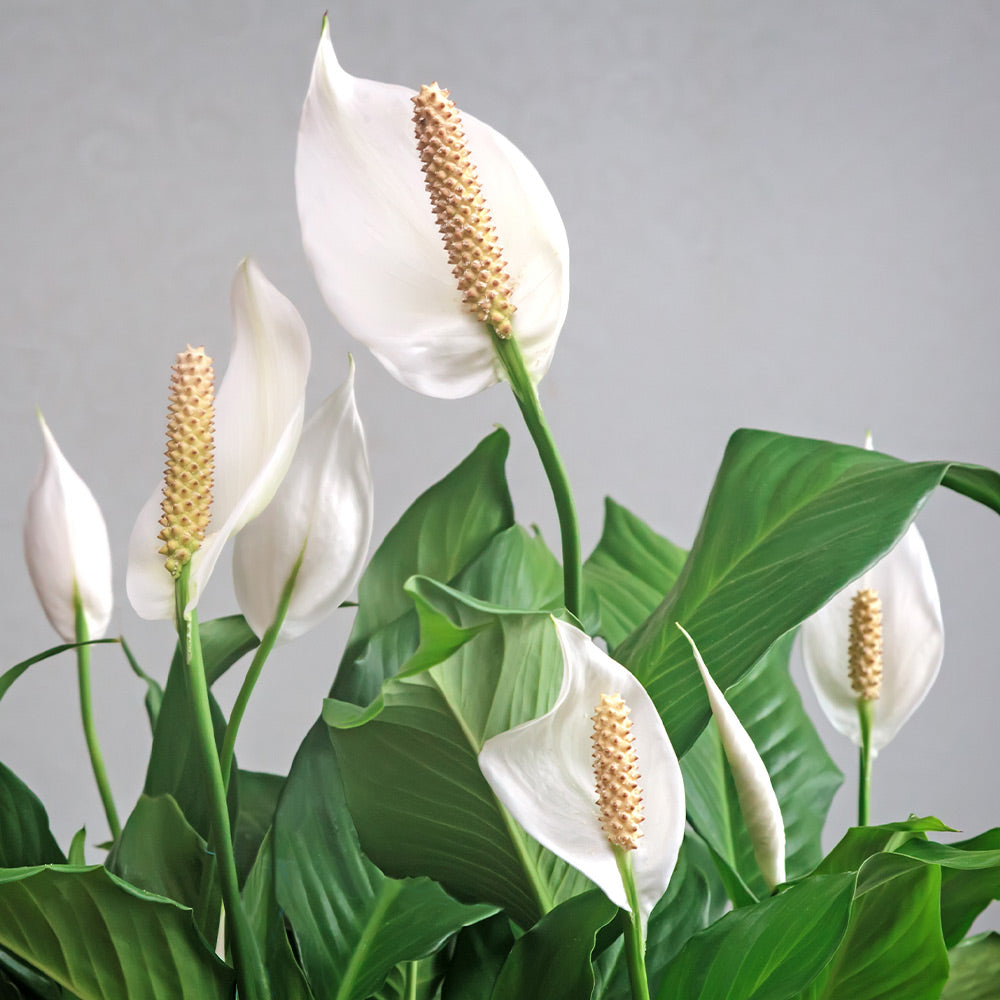
Peace Lilies come from the tropics and love a more humid atmosphere.
This traditional houseplant staple shows no signs of losing its spot in indoor gardeners’ hearts. While the glossy green foliage is certainly something to look forward to, the white flowers of this beautiful houseplant are what really help it stand out. The flower is technically called a spadix, the central part of the ‘flower’, surrounded by the white modified leaf that makes the Peace Lily so instantly recognizable.
These plants do enjoy moisture and need more consistent watering than other plants to prevent wilting. But beyond that, they are quite resilient and difficult to kill in the right environments.
Anthurium
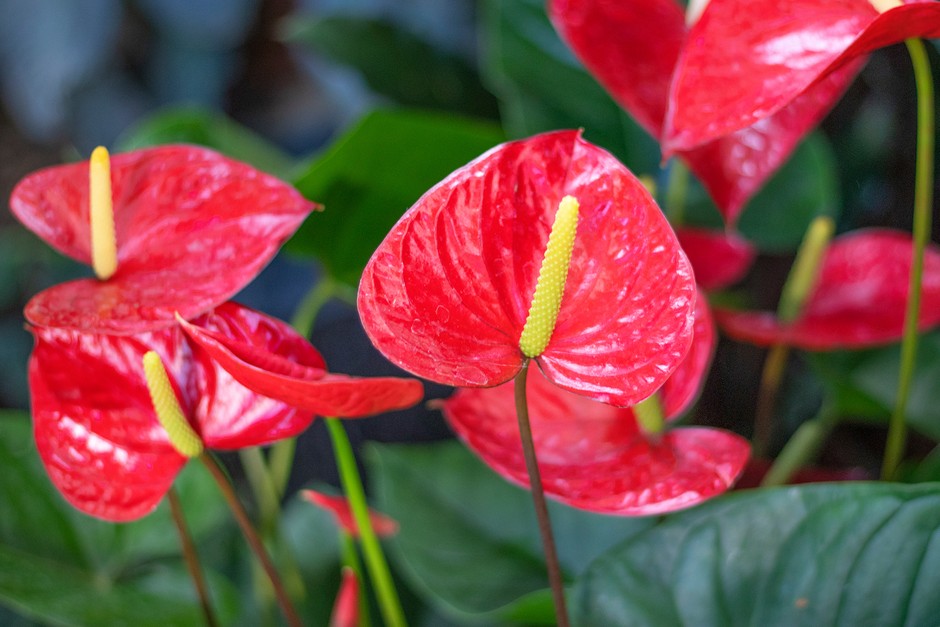
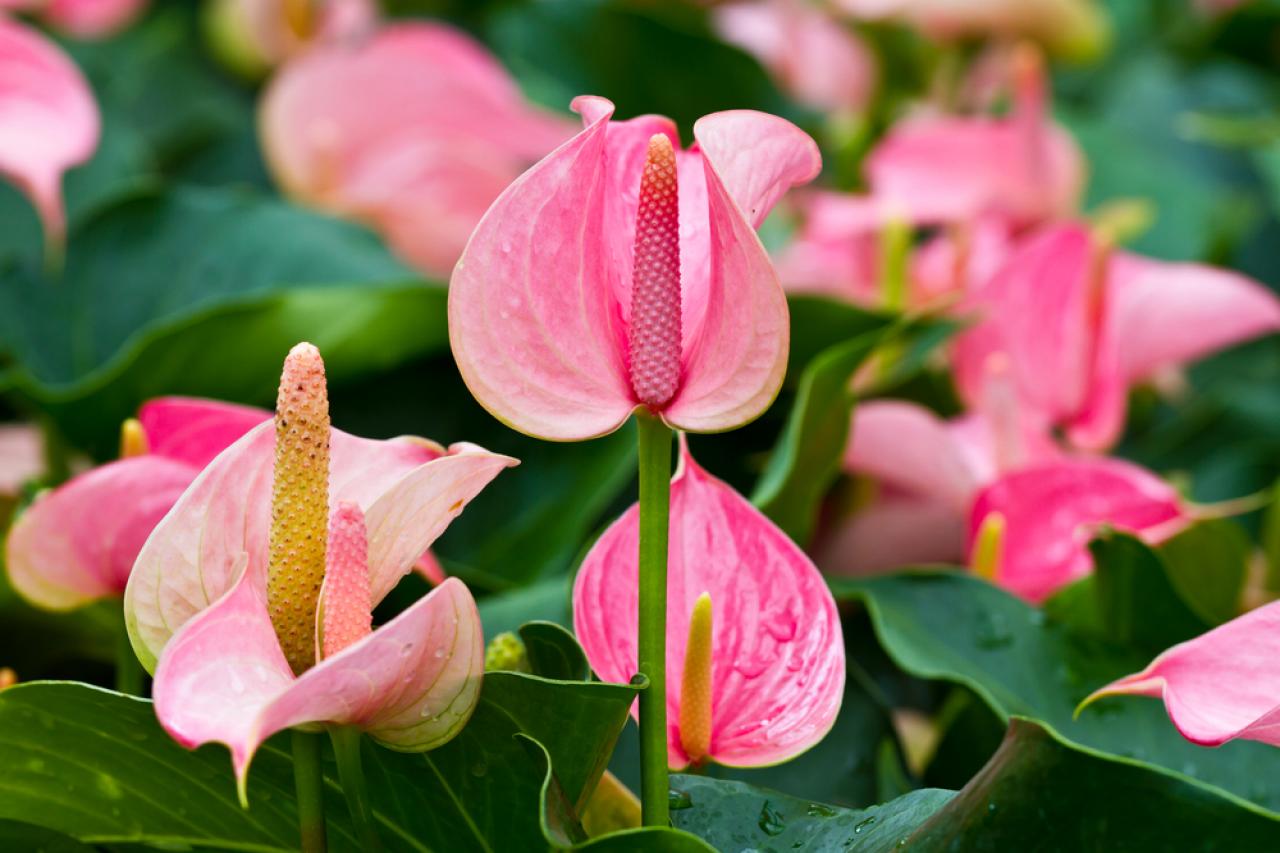
Anthurium prefers diffused lighting without direct sunlight and high humidity.
Another traditional 70s houseplant making a comeback in a big way is the Anthurium. Part of the same plant family is the Peace Lily, it has similarly shaped spadix flowers surrounded by modified leaves. However, what sets these plants apart is the colors of these modified leaves, from bright and captivating red to soft blush pink and almost everything in between.
Given the right light, these plants can thrive indoors with almost no attention. They don’t need much of a push to flower either, with large glossy leaves growing consistently to surround the stunning blooms.
Hoya
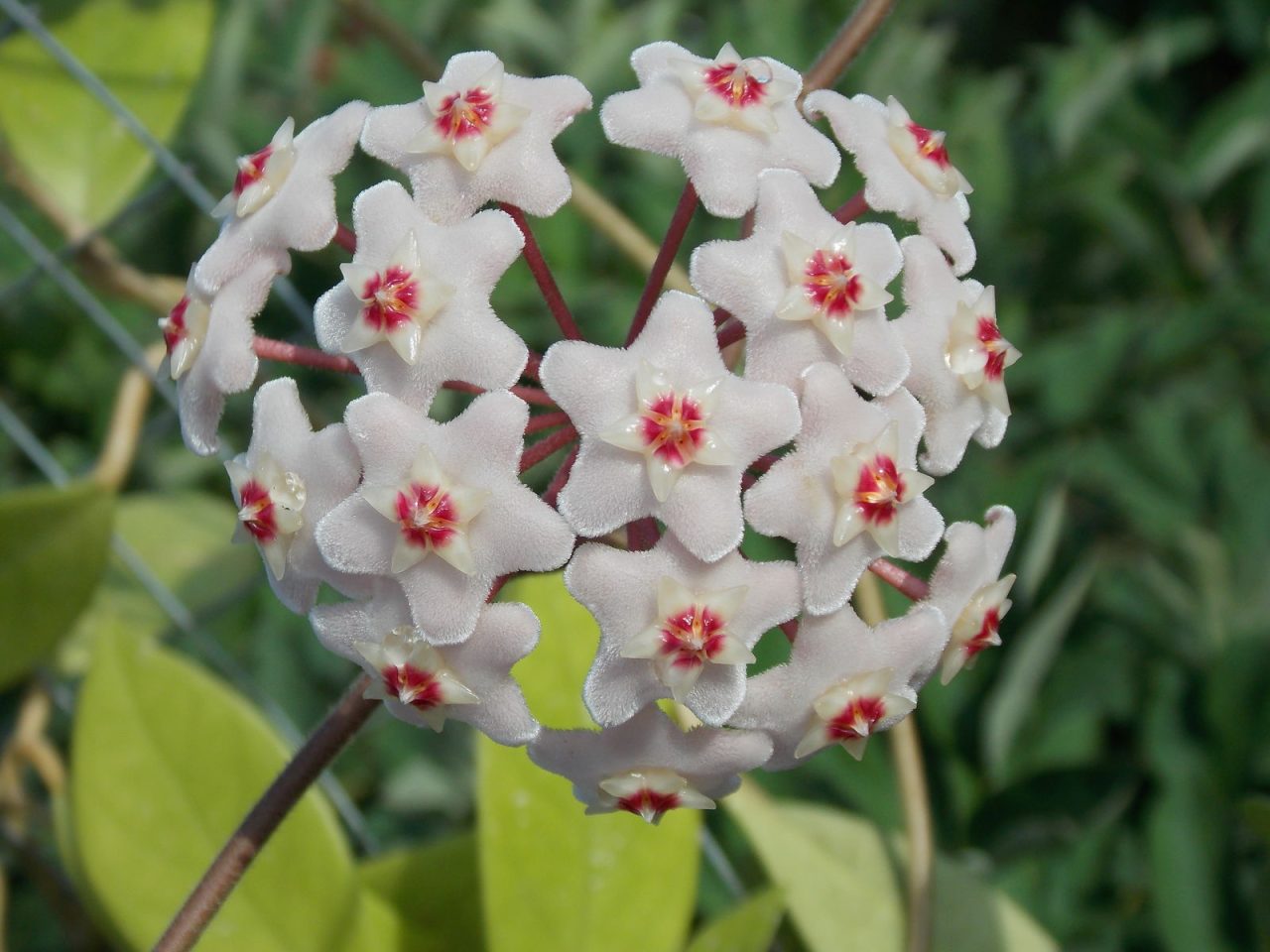

Hoya perfectly tolerates the lack of moisture, and requires moderate watering after the soil dries out.
The Hoya genus is packed with variety in leaf color, shape and even texture. But it’s what joins the various species – their clusters of tiny flowers – that make them so beloved. The blooms release unique scents that fill your home after dark, and it’s even become somewhat of a game online to identify the scents that come from the many species and cultivars.
Hoyas are resilient plants that thrive for years with little effort. However, some species are fussier than others and need specialized care, so make sure you choose one of the more common types if you’re specifically looking for something ‘impossible to kill’.
Parlor Palm
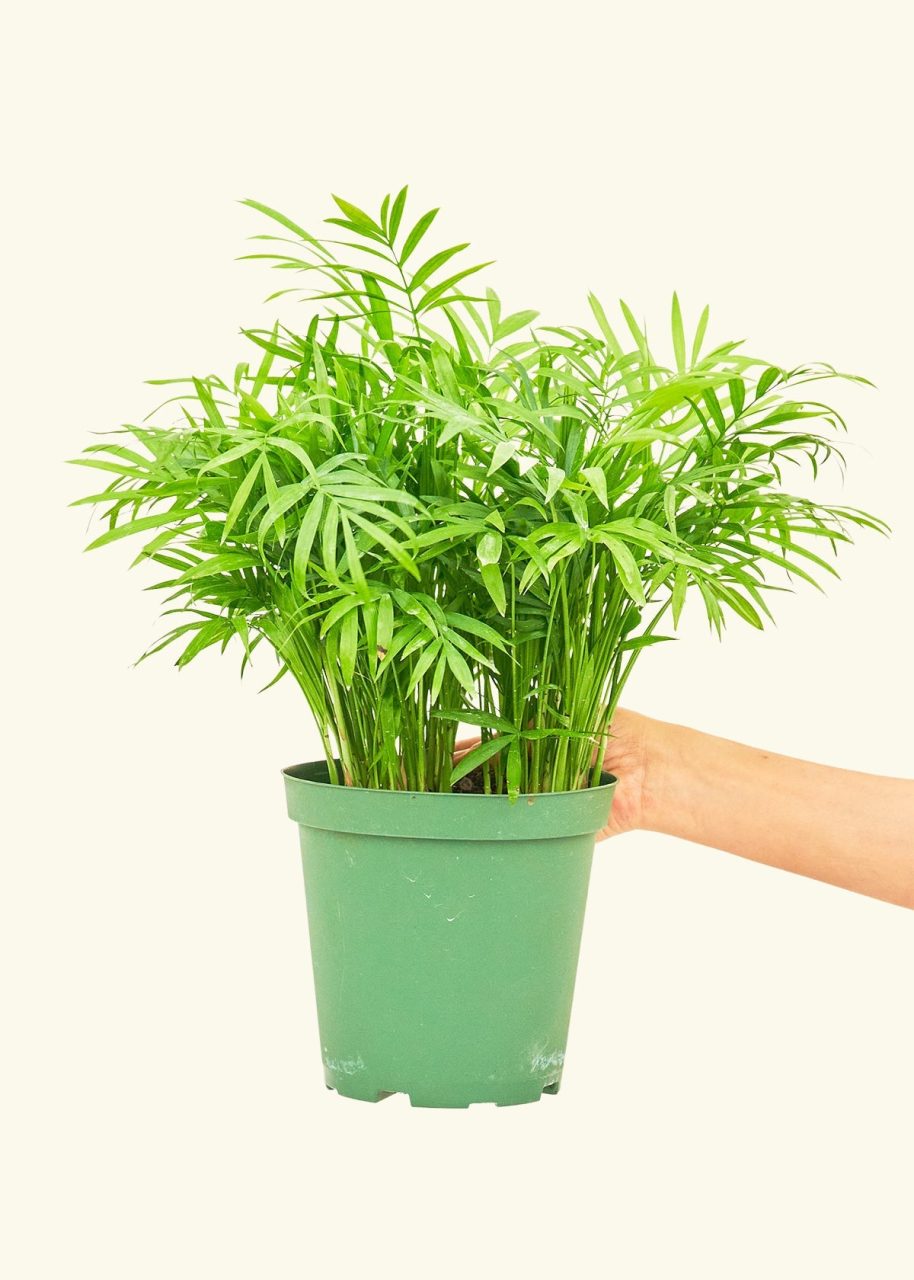
Parlor Palm is a compact indoor palm plant that prefers low light and can be harmed by direct sunlight.
One of the most popular palms around, Chamaedorea elegans is a go-to indoor plant for those with tropical-inspired interiors. The large arching fronds instantly add a holiday feel to any corner. They look even better placed in late afternoon sunlight, when the soft orange light casts shadows around your home.
Choosing a more established Parlor Palm is key to its ease of care. Larger palms are far hardier than young ones and won’t need repotting very often, adding to their ease of care.
Rubber Tree
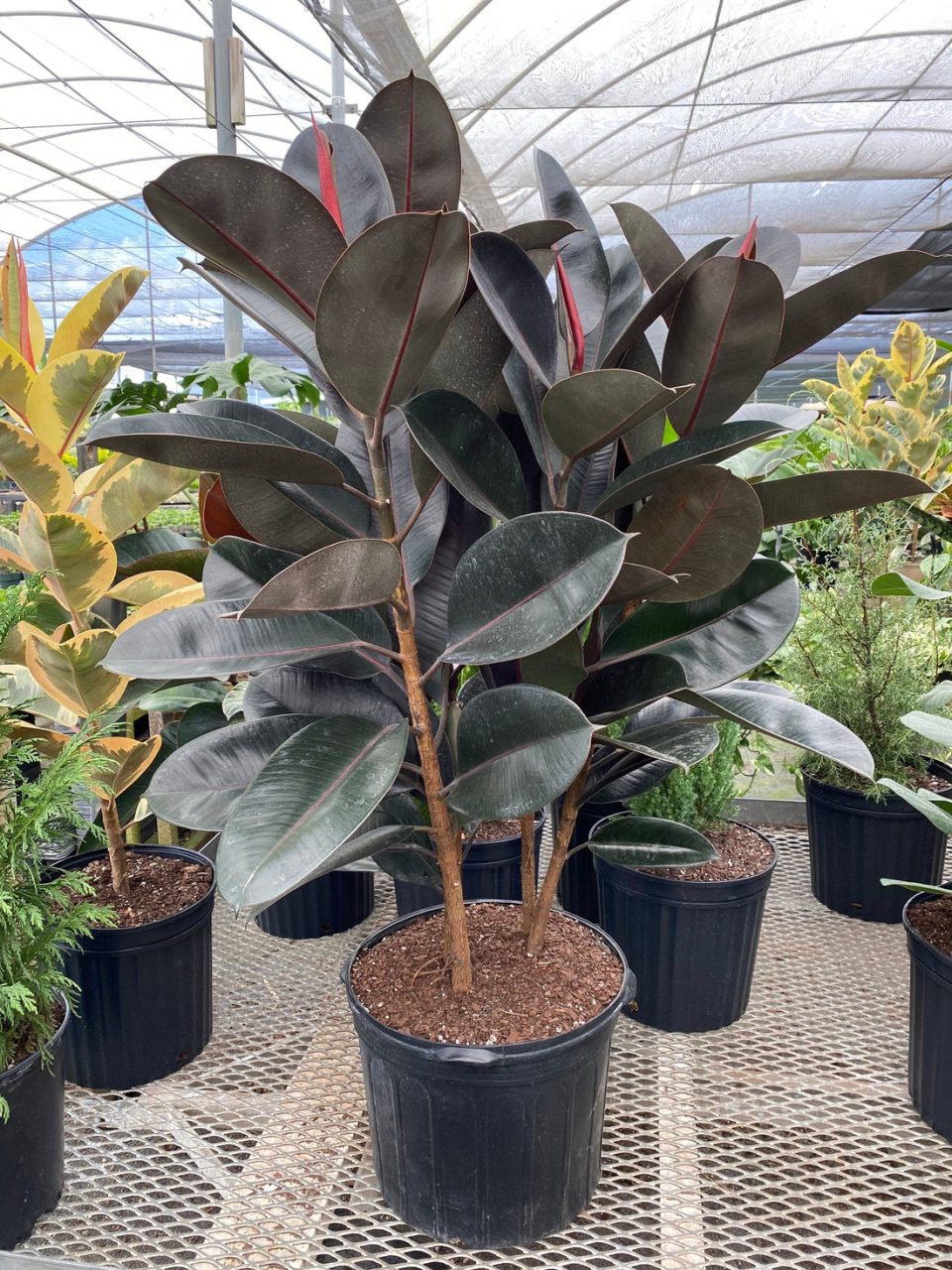
Rubber Tree is picky about sufficient humidity. It is necessary to regularly wipe and spray the leaves with soft water at room temperature.
For those looking for a statement indoor tree to take up space in your home, any member of the Ficus genus should be your first thought. The Fiddle Leaf Fig, Ficus lyrata, is one of those members. However, as many Fiddle Leaf owners already know, they are certainly not suitable to be called almost impossible to kill.
Instead, look to the Fiddle Leaf’s popular cousin, the Rubber Tree. Ficus elastica is a gorgeous, glossy plant with strong stems. It’s far less fussy than the Fiddle Leaf Fig, but just as pretty. There are also many types to choose from if you’re looking to add a pop of color to your interiors.
Ficus Audrey
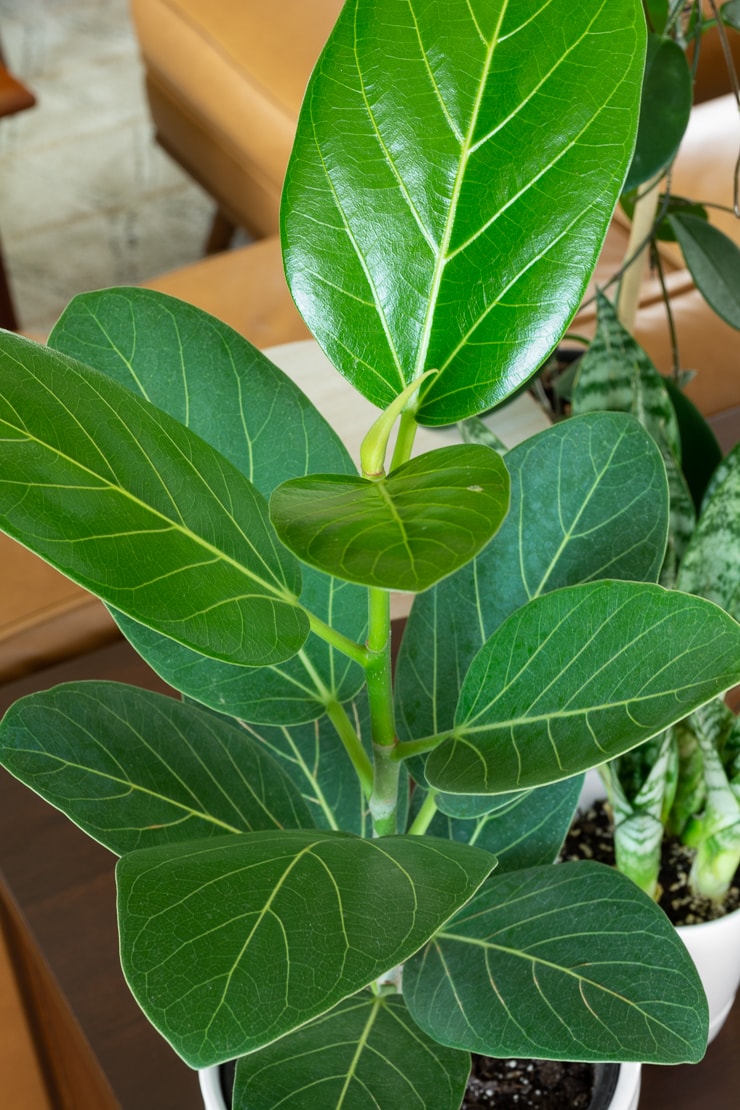
Ficus Audrey grows best in evenly moist soil with little dry spells between waterings.
Another member of the Ficus genus that’s great for newbies or busy gardeners is Ficus benghalensis, commonly called Ficus Audrey. The leaves are an interesting mix of other Ficus plants, retaining the shape of elastica and the texture and color of lyrata.
This recent entrant to the houseplant category is actually the national tree of India, with tons of growth potential. If you can get your hands on a larger, more established one, it is more likely to last longer – even with a bit of neglect.
Bamboo Palm
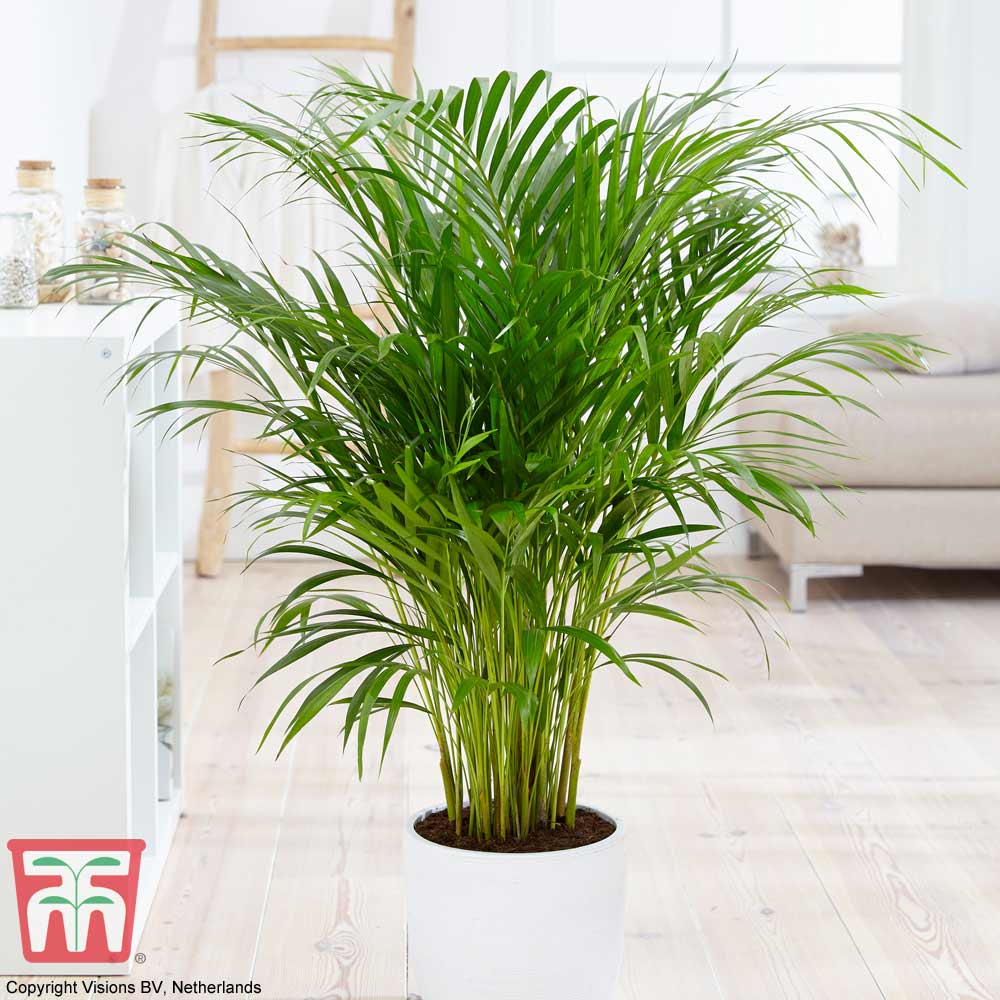
Bamboo Palm is a heat-loving plant that needs to be watered only with well-settled water.
For lover’s of Palms that already have one Parlor Palm in their collection, the Bamboo Palm should be your next go-to. Pet friendly and an efficient air purifier, it’s almost too good to be true. Apart from having to keep it watered, the Bamboo Palm is certainly almost impossible to kill.
This plant will grow to fill out whichever pot you put it in and provide a tropical feel to any location, all with minimal attention.
Yucca
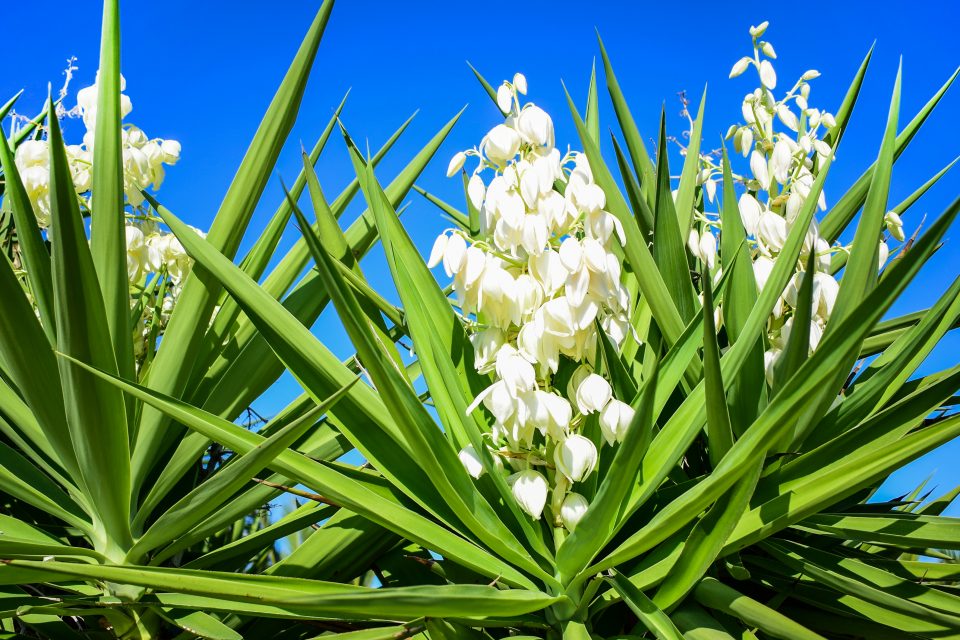
Yucca does not require spraying the leaves, but sometimes you need to arrange a warm shower to wash off the dust.
A member of the Asparagus family, Yucca has bright green stiff leaves that add a sense of structure and drama to any space. The geometric layout can be very eye-catching, especially when set against softer-looking plants. Native to the arid deserts of North America, the Yucca will prove itself a survivor regardless of how little water it gets.
Dragon Tree
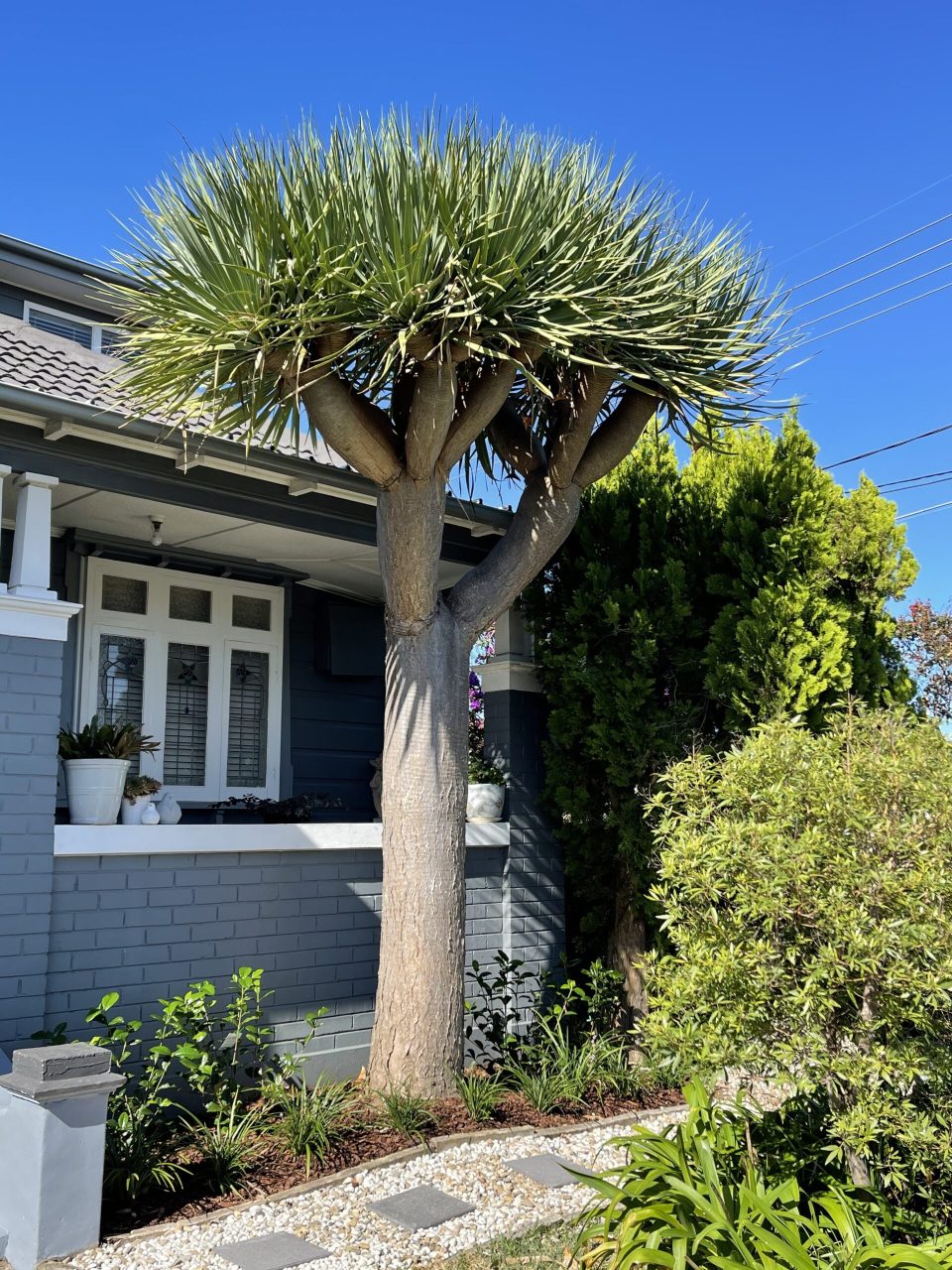
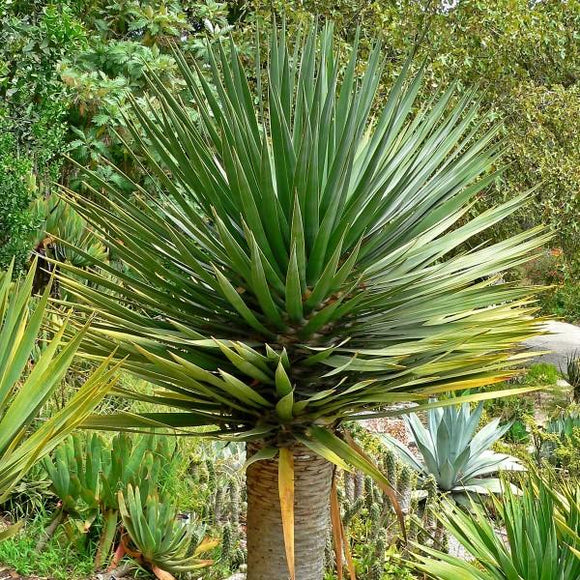
In the summer, Dragon Tree should be placed in a shaded place near a western or southern window.
Dragon Tree is the common name for some members of the Dracaena genus. Like Yucca, Dracaena is from the Asparagus family and you really can see the resemblance. These plants are characterized by straight and usually narrow central stems and long, striped leaves.
In keeping with the Yucca, the Dracaena is similarly hardy and will survive in most conditions, if not thrive. If you want them to grow faster, make sure you place them in areas with bright light to better replicate the conditions in their natural habitats.
Ponytail Palm
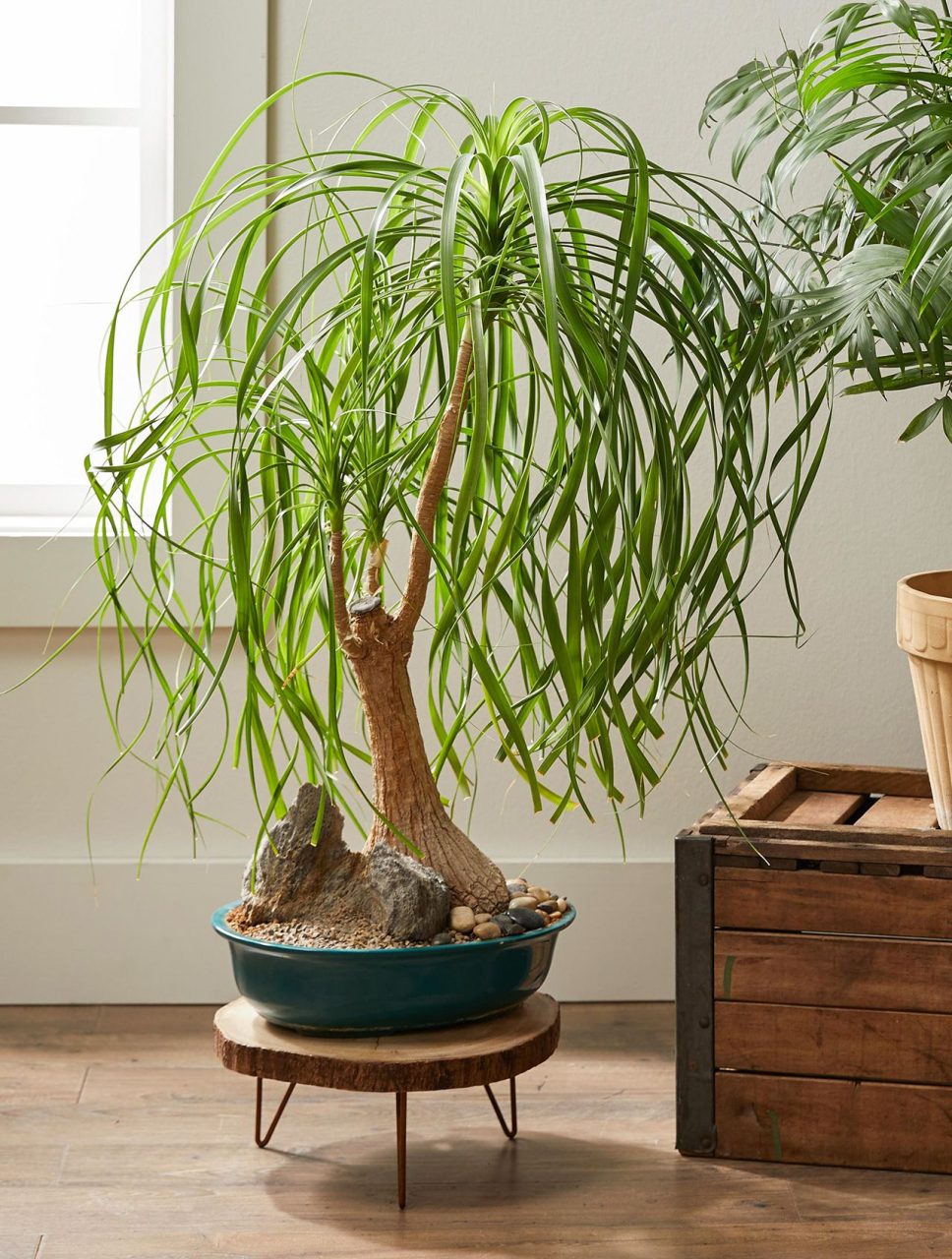
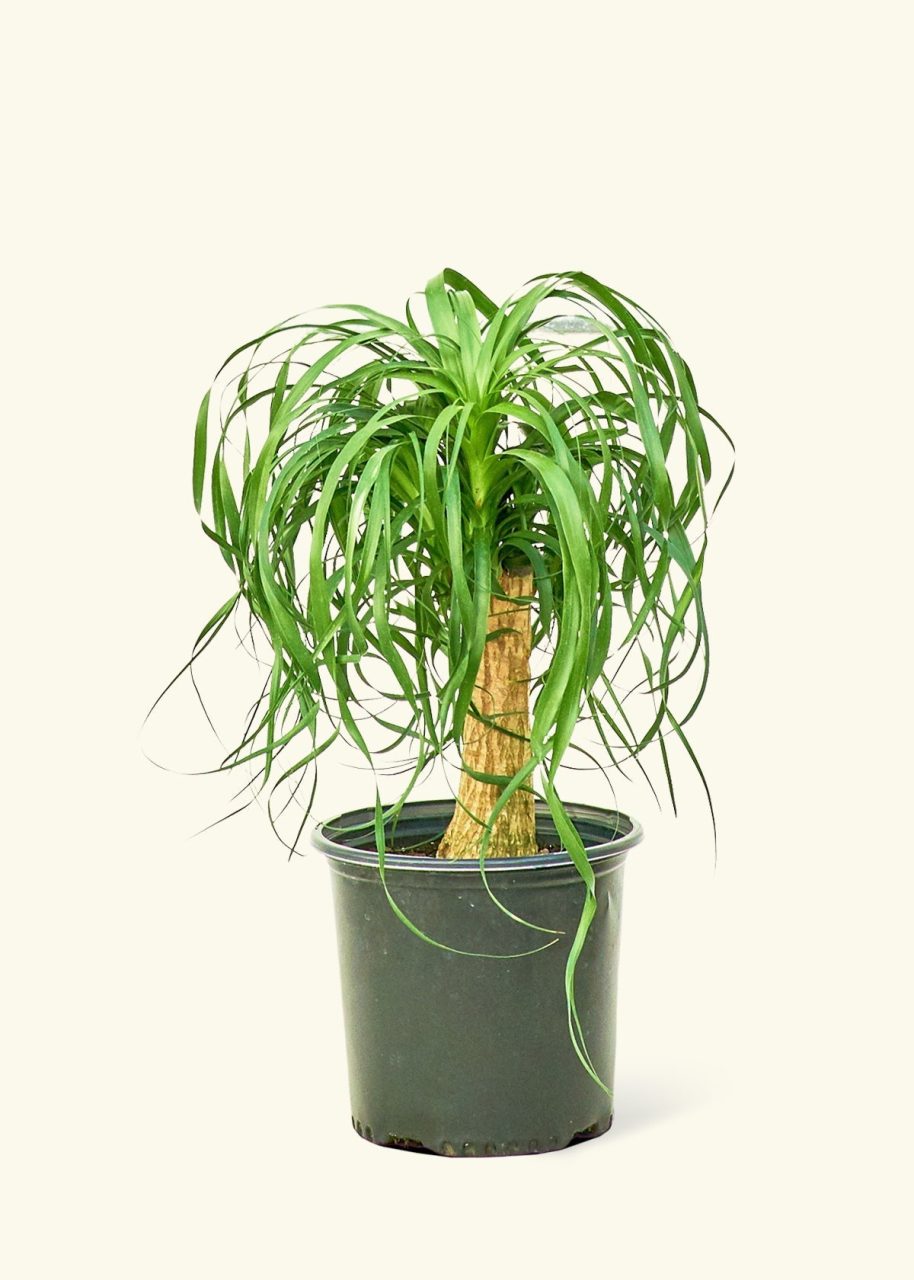
Ponytail Palm is drought tolerant, slow growing and low maintenance.
This low maintenance houseplant is especially interesting, almost resembling a tree out of a whimsical children’s book. A very slow grower, Beaucarnea recurvata has a bulbous woody stem topped with long leaves, hailing from arid central American regions.
Ponytail palms have a unique look that attracts attention in any space. Thanks to their interesting trunks, they store tons of water and can go for weeks on end without a top-up. Just don’t overwater them and you’ll have a healthy and happy Ponytail Palm for years.
Aloe

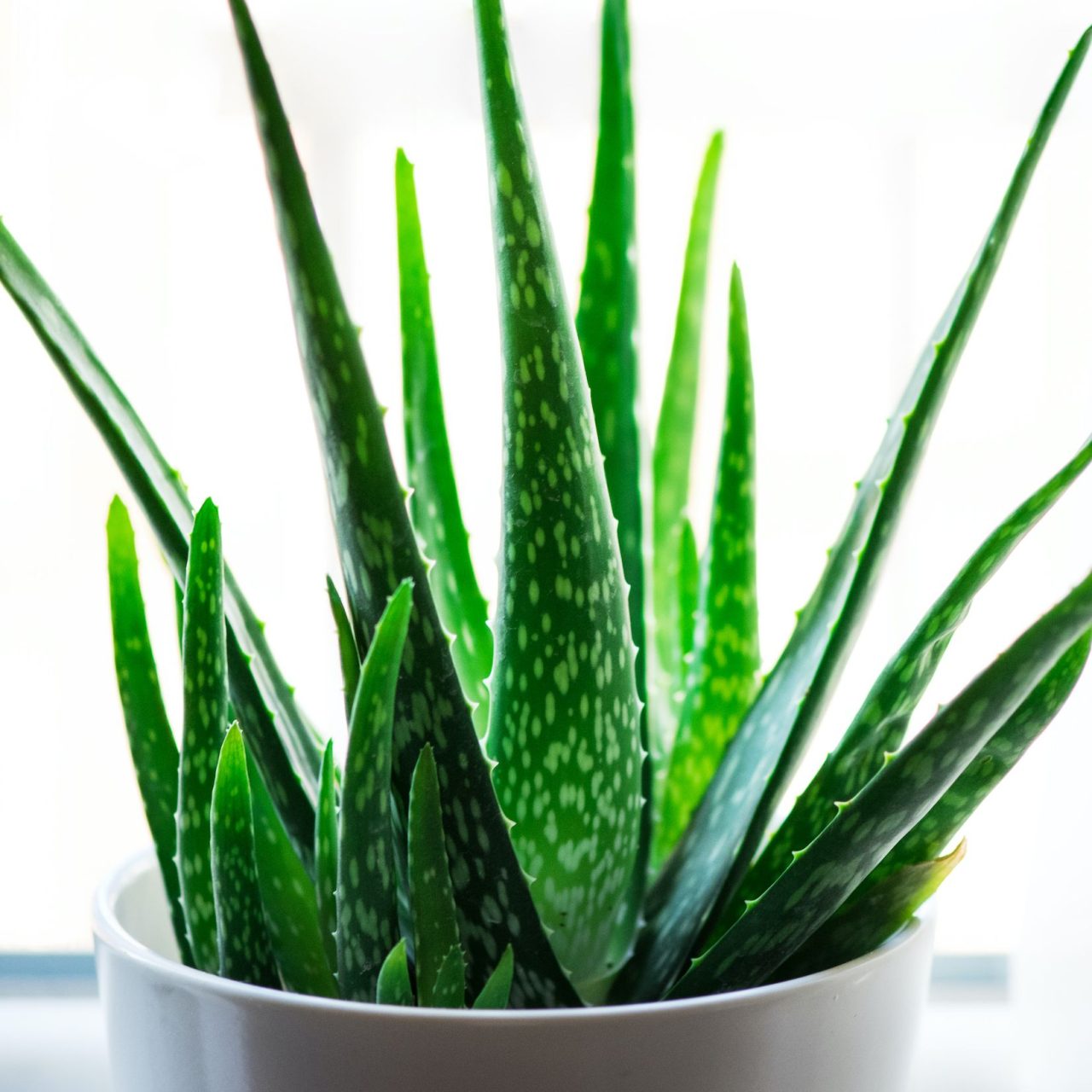
Do not keep Aloe plant in direct sunlight. In spring and summer, it should be placed in shady places.
The Aloe genus contains over 560 species of plants, many of which are easy to care for and hard to kill. Aloes are succulents, and like most succulents, they love sun and store their water in their leaves. Keeping that in mind, avoiding overwatering and giving them bright light will ensure these plants are very difficult to kill.
Haworthia
Haworthia does not need frequent watering, only after the topsoil has dried.
Another South African succulent, Haworthia is a very hardy plant. Plants in this genus come in many forms, usually covered with white bumps that are often arranged as stripes, giving them the common name Zebra Plant. Some are also commonly confused with Aloes.
Because they are also succulents, the previous advice applies with an emphasis on enough light and not too much water.
Bromeliad Bromeliad does not tolerate hard water, water the flower with boiled water, previously settled.
Bromeliad does not tolerate hard water, water the flower with boiled water, previously settled.
Colorful, eye-catching, and adaptable, the bromeliad is the best ratio of aesthetics and effort. Most have long leaves with teeth-like growth along the edges, and come in all manner of colors, shapes and patterns. Aside from moist soil, the bromeliad isn’t too fussy about conditions and if it is given partial sun will reward you with some truly stunning flowers.
Peperomia
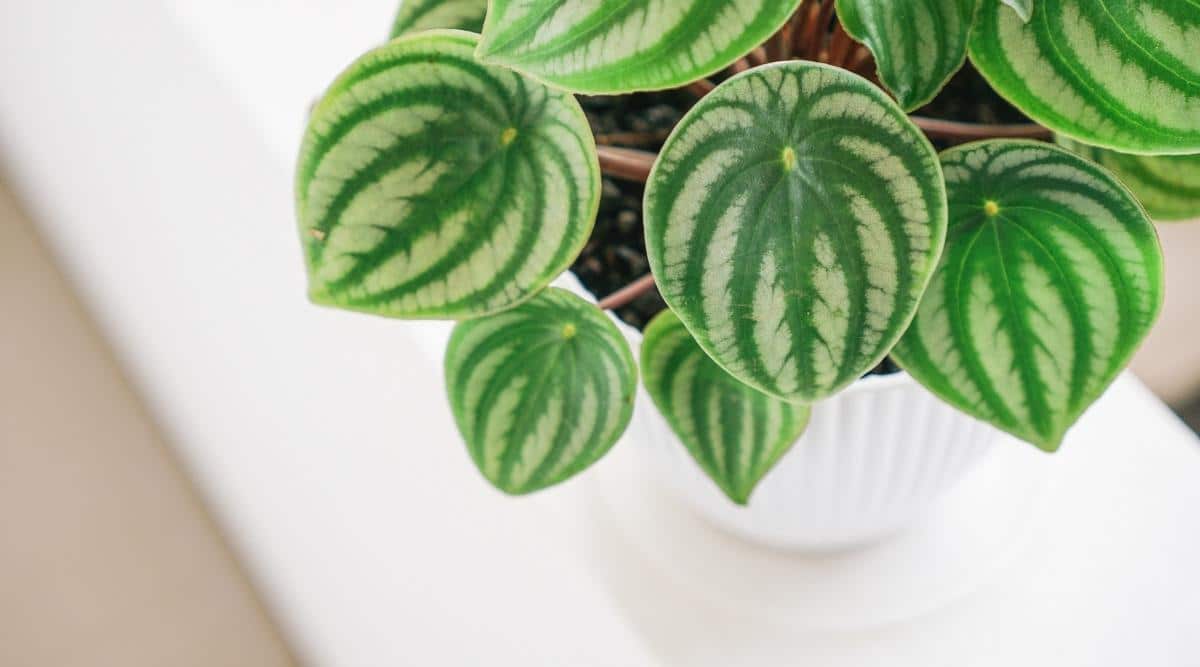 Peperomia does not tolerate waterlogging of the soil.
Peperomia does not tolerate waterlogging of the soil.
Also known as Radiator plants, Peperomias are some of the best beginner plants one could ask for. They can handle missing a watering or two, can tolerate low light levels, and best of all, come in a vast array of styles, shapes and colors.
When picking out your Peperomia, know that some can be easier to care for than others. Choose species with thicker leaves if you are not consistent when watering.
Kalanchoe
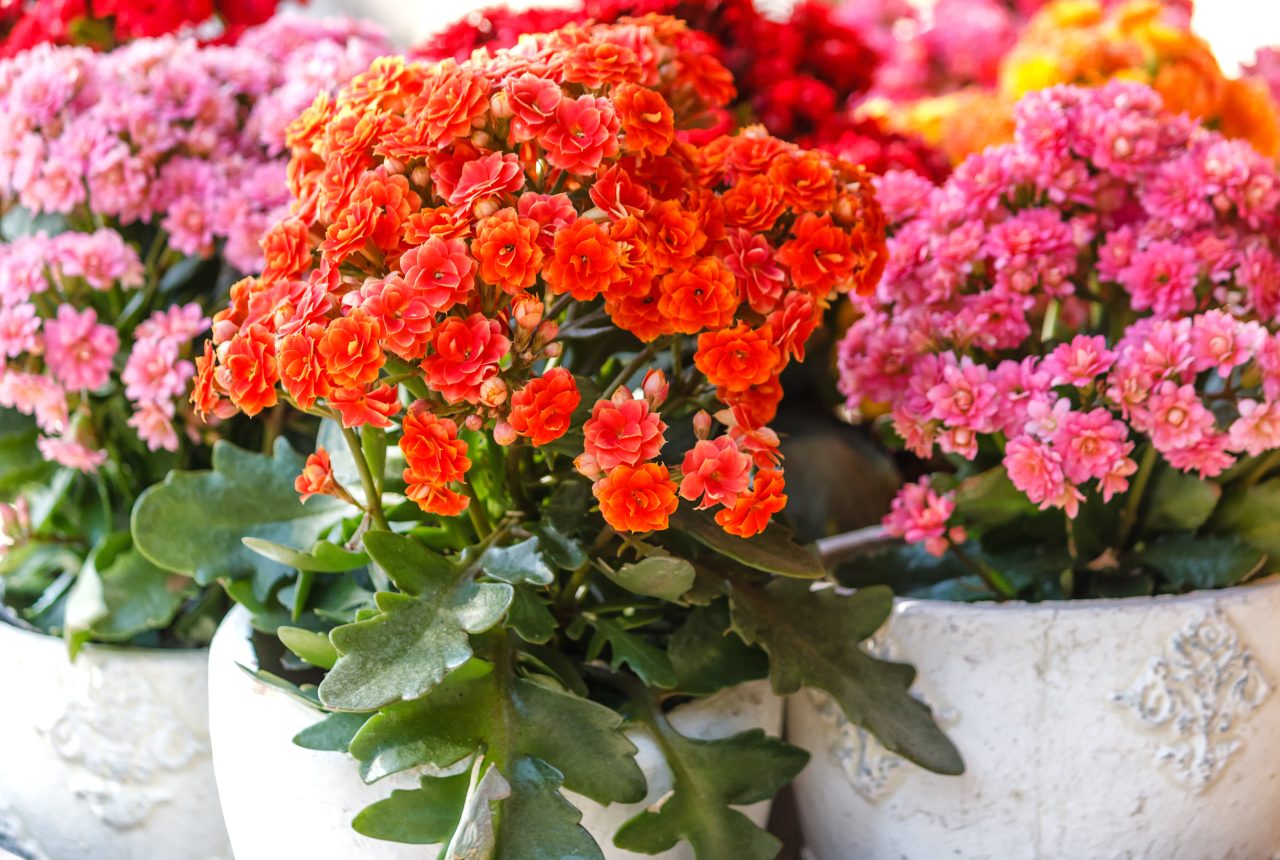
The main thing for Kalanchoe is high-quality lighting, without which it loses its aesthetic properties.
Cute, colorful and compact – Kalanchoes truly have it all. Part of the same plant family as the popular Jade plant, these succulents have the ability to add a stunning pop of color to bright kitchens or even darker corners.
Their thick leaves and ease of growth make them ideal for forgetful plant parents. Just give them enough bright light and don’t overwater and these slow-growers will be around for years and years.
Lucky Bamboo
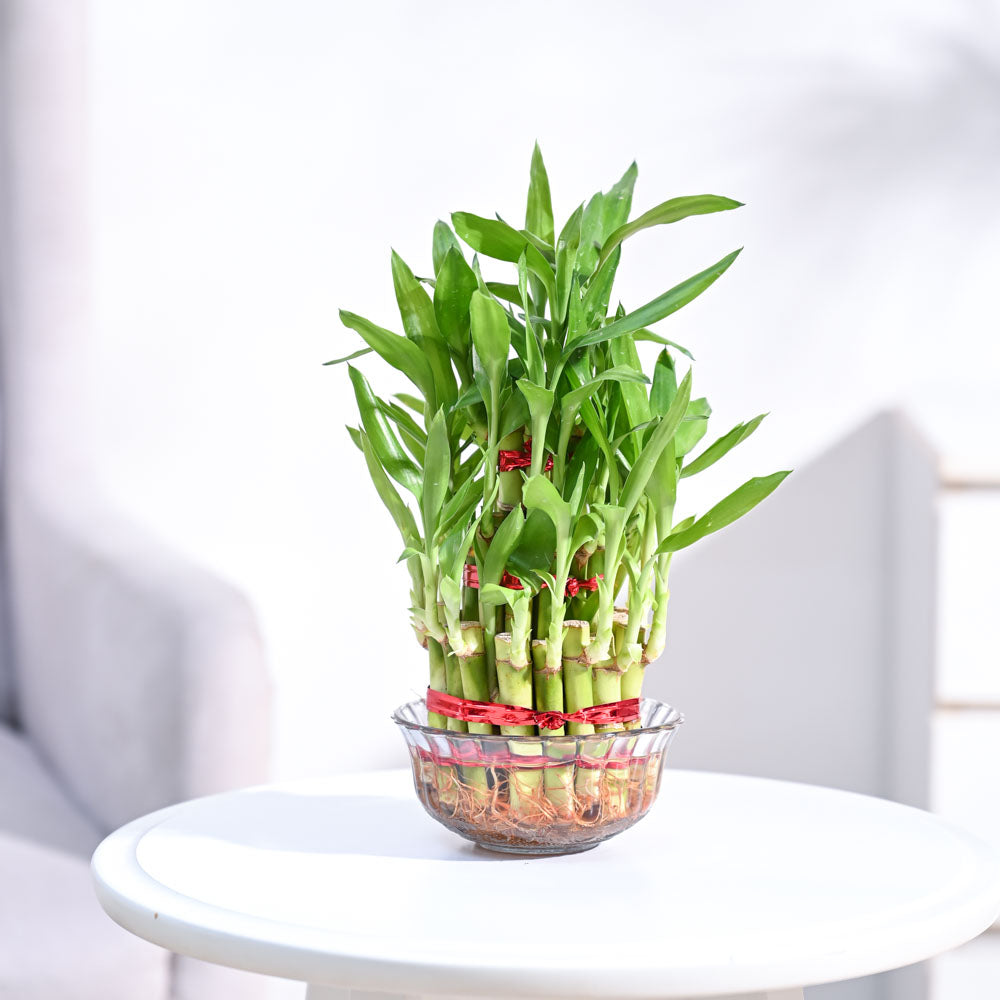
Lucky Bamboo grows best on an east or west window, does not like cold drafts.
Despite the common name, this popular gifting plant is not bamboo at all. It is actually a member of the Dracaena genus, related to the Dragon Tree and other hardy houseplants. The stems are manipulated into interesting shapes to create a modern and unique décor feature.
Not only are these plants difficult to kill, but they’re also believed to bring luck to you and your family. Lucky Bamboo grows quickly with little fuss and doesn’t require much maintenance to look its best.
Christmas Cactus

Christmas Cactus is a plant that can bloom at almost any time of the year.
This succulent plant is popular around Christmas time for its colorful flowers, hence the common name. These plants are often confused for the Thanksgiving Cactus – closely related, but not quite the same plant.
The Christmas Cactus is another plant commonly passed down from generation to generation. They need very little attention to thrive and will generally be happier when left alone to do their own thing.
Moth Orchid
 It is necessary to water the Moth Orchid only after the soil is completely dry.
It is necessary to water the Moth Orchid only after the soil is completely dry.
You may be shaking your head at the sight of the Moth Orchid on this list. Before we go any further, let me clarify – you may find it difficult to get them to rebloom indoors, but you should have no trouble keeping the plant itself alive, even with a bit of neglect.
These epiphytes are happy to go for weeks without water. They can handle low light conditions, lack of humidity and lack of nutrients while retaining their glossy green glow. Improve their care if you want them to flower again, but don’t worry too much if you’re happy with just leaves.
Begonia Rex

Begonia Rex responds well to regular watering. However, do not allow liquid to stagnate in the root system.
A colorful foliage plant with fascinating textured leaves, Begonias are great options for indoor growth. They also have the ability to flower indoors, but will only do so under near-perfect conditions. However, if you’re happy to keep them just for their colorful leaves, you’ll have no trouble growing these stunning plants indoors.
They also come with a handy indicator of when to water – drooping leaves and stems – that make them ideal for chronic underwaterers.
English Ivy
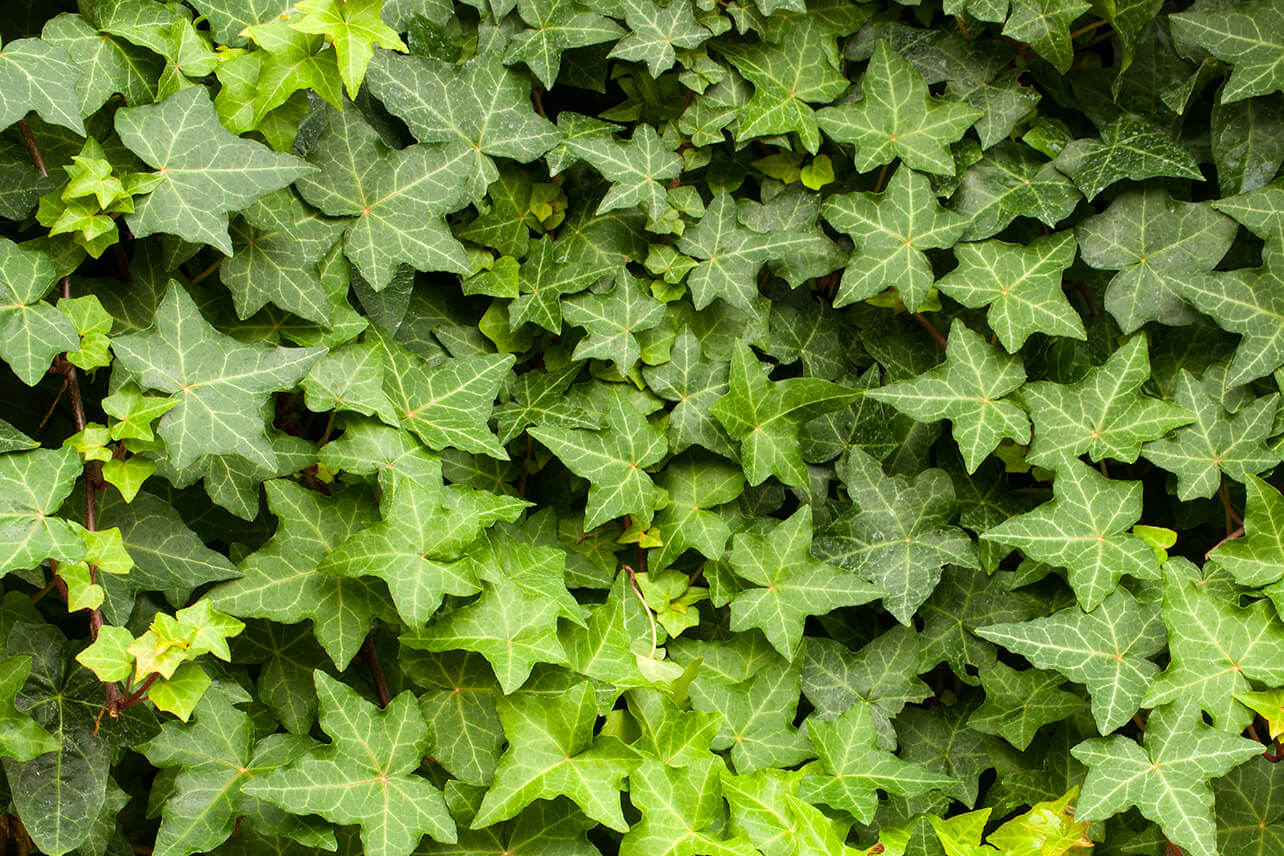
English Ivy with variegated foliage need a large amount of bright light, otherwise, their leaf plates become a solid green color.
Although you can’t grow these plants outdoors due to their invasive status in most regions, they make wonderful indoor plants. This variegated houseplant can grow incredibly quickly, attaching themselves to nearby structures to make living and ever-changing décor.
Make sure you keep these vigorous plants in their pots and away from your outdoor space to avoid impacting native plants in the area.
Final Thoughts
For those that consider themselves ‘black thumbs’, you can’t go wrong with any one of these 31 houseplants. While all plants require some TLC, those on this list should be a little more forgiving once you’ve welcomed them home. Choose the right one for your time, needs and indoor conditions to make them even easier to care for.





